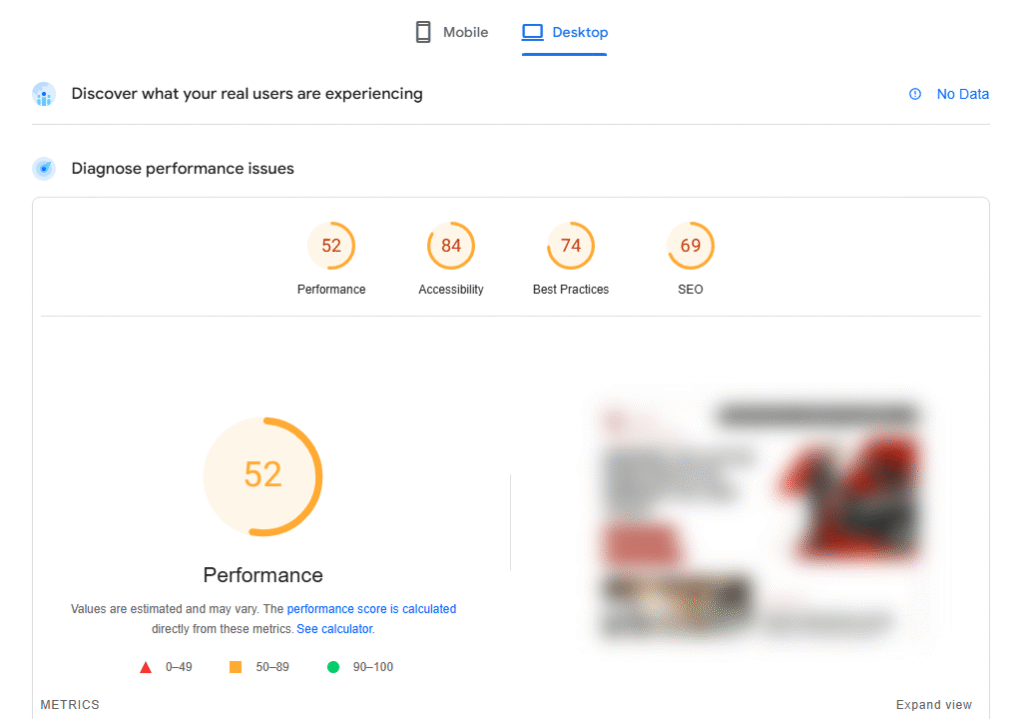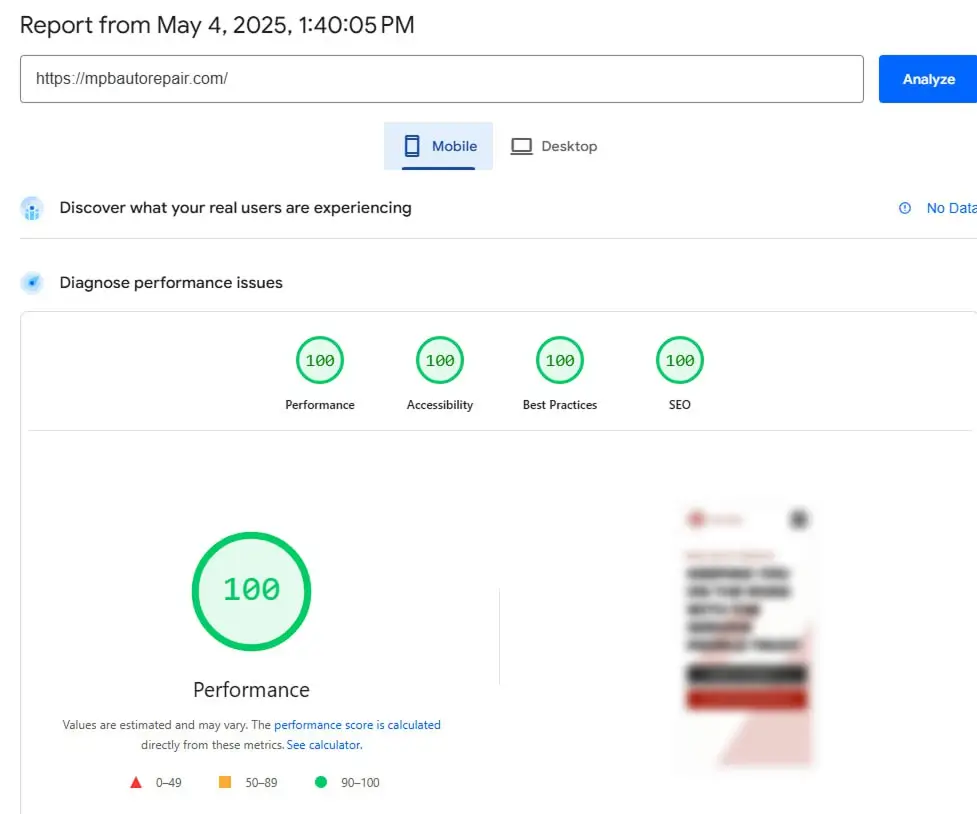Website that’s SEO-friendly from Day One
When this client came to us, they already knew they wanted strong search visibility. The problem was, their site wasn’t built with SEO in mind at all. Slow performance, clunky navigation, and missing technical basics meant that any SEO campaign would have been wasted effort. Before we could talk about rankings, we had to fix the foundation.

Slow loading times made it difficult for visitors to stay on the site. Navigation was confusing, burying important services several clicks deep. Meta tags, schema, and indexing controls were missing, which meant search engines couldn’t properly read or prioritize the content. In short, before we could even think about long-term SEO campaigns, the website itself had to be rebuilt from the ground up.
Step 1: Fixing the Foundation
The first step was migrating the client to a CMS that actually supported SEO. The previous setup limited URL control, blocked custom metadata, and made editing layouts difficult. By moving to a more flexible platform, we gave them the ability to adjust URLs, titles, and content without starting from scratch every time.
We then reorganized navigation. Instead of a tangle of pages, we created a logical menu that grouped services into clear categories. Breadcrumbs were added to make the hierarchy visible both to users and to search engines. We cleaned up URLs so they were human-readable and keyword-friendly — no more “page123,” but “/services/service-name.” Finally, we created and submitted an XML sitemap, which gave search engines a direct roadmap to all important pages.
Step 2: Technical Performance
Search rankings don’t survive on content alone. If a site is slow or clumsy, people bounce and Google notices. To address that, we ran a full technical audit and made changes at every level:

- Page speed: Images were compressed and converted into lighter formats. Lazy loading was introduced so files only appeared as users scrolled. Code was minified to strip away unnecessary weight. We also enabled browser and server caching, which cut load times for returning visitors dramatically.
- Mobile responsiveness: More than half of this client’s potential customers search from a phone. On their old site, buttons overlapped, text spilled off the screen, and forms were almost unusable. We rebuilt responsive layouts, tested across devices, and resolved spacing issues so the site passed Google’s mobile-friendly standards.
- Markup: We also added schema markup — in this case, local business details — so Google could display rich snippets like review srating directly in search results.
Step 3: Content Optimization
With the technical groundwork in place, we turned to the content itself. The core landing pages — home, services, and contact — were rewritten with both users and search intent in mind. Messaging was clarified to highlight the client’s value while naturally weaving in target keywords for their service area – Roseville to Rancho Cordova. Each page was given unique titles and descriptions that accurately represented its content, helping drive higher click-through rates in search.
We also restructured headings. Instead of one long block of text, pages were broken into clear H1, H2, and H3 sections. This made the content scannable for readers and more understandable for search engines.

To give the site an immediate presence, we launched with a small blog library. These posts targeted long-tail keywords such as “how long does it take to repair a car after an accident” or “car accident repair process”. Beyond rankings, the content demonstrated expertise and provided value to potential clients who weren’t yet ready to convert.
Step 4: Preparing for Scalability
SEO isn’t static, and neither should a website be. We designed this site to grow without breaking. The menu structure allows for new services and categories to slot in seamlessly. Templates were built to make updating content simple, whether that means refreshing old blog posts or adding a new service page.
We also planned for advanced needs down the road: structured data expansion, more detailed analytics, and even hosting upgrades as traffic increases. By leaving these doors open, we made sure the client won’t have to rebuild again just to keep pace.
Results
By launch, the website was fast, mobile-friendly, and fully indexable. Search engines had no trouble crawling the content, and users found navigation clear and intuitive. Within weeks, the site began showing up for local service searches — not because design alone wins rankings, but because the website finally gave SEO a platform to work on.
The client immediately noticed improvements in calls and form submissions compared to their old site. More importantly, they now had a foundation strong enough to support ongoing SEO campaigns, content growth, and long-term visibility.
Takeaway
SEO doesn’t happen by accident, and it doesn’t happen on a broken website. In this project, we proved how building with SEO in mind from day one prevents wasted effort, avoids costly fixes, and ensures that when campaigns begin, the site is ready to climb.

